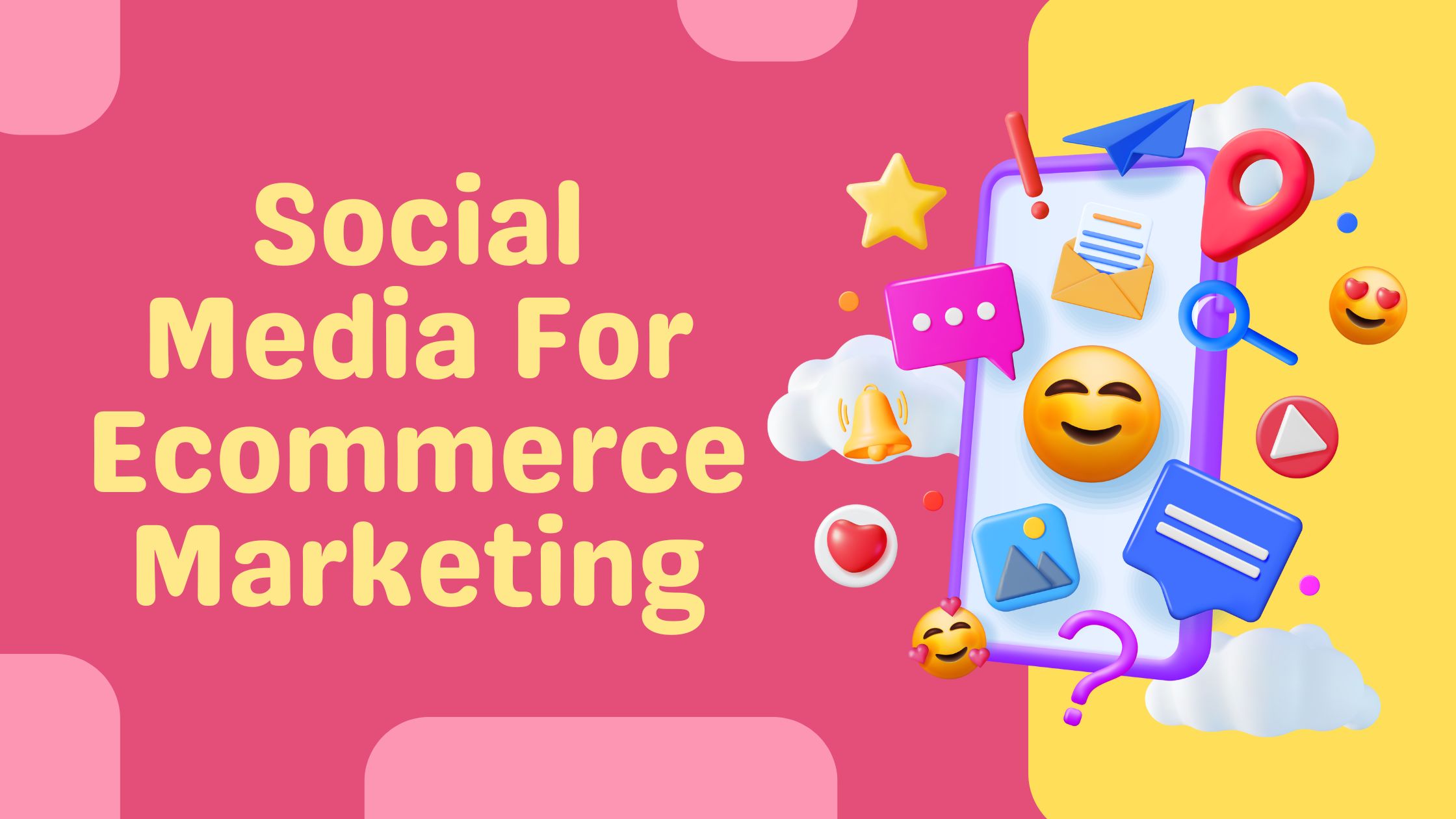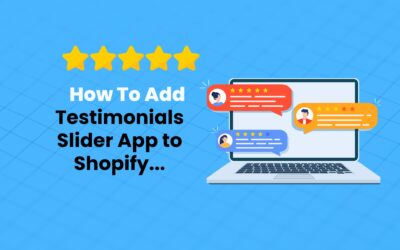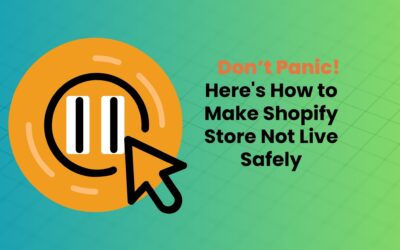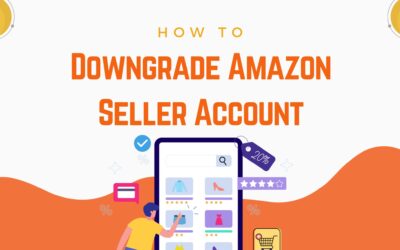How To Effectively Use Social Media For Ecommerce Marketing
To boost ecommerce marketing, a strong online presence is a must.
You need to create brand awareness, reach a wider audience, drive website traffic, and increase conversions.
Consistency is key – in your brand messaging and visual content that showcases your products and company culture.
You should also engage with customers through comments and direct messages.
Partner with influencers, create shareable content, and run targeted ads to drive traffic to your ecommerce website.
Now, let’s dive into how to develop a unique tone, create engaging content, and track performance metrics to maximize online visibility and sales.
6 Reasons Why You Should Use Social Media for Ecommerce Marketing
When it comes to ecommerce marketing, social media is a powerful tool that can greatly impact business outcomes.
By using social media platforms, businesses can achieve a range of objectives.
These include creating brand awareness, driving website traffic, boosting conversions, and influencing buying decisions.
In the following sections, we will explore these benefits in more detail.
We will examine how social media can be used to connect with audiences and drive business growth.
1. Creates Brand Awareness
Establishing a strong online presence through social media is crucial for ecommerce businesses. It helps create brand awareness and reach a wider audience. This increased visibility builds trust and credibility with potential customers.
Social media contributes to brand awareness in several ways. Consistent brand messaging across all platforms helps.
Visual content showcasing products and company culture also plays a key role.
Engagement with customers through comments and direct messages is vital.
Influencer partnerships can expand brand reach.
2. Drive Website Traffic
Driving traffic to your ecommerce website is crucial for converting followers into customers. Social media platforms can be a powerful tool in achieving this.
By creating strategic content, running paid ads, and partnering with influencers, you can drive targeted traffic to your website.
This traffic can lead to increased online visibility, more brand engagement, and ultimately, higher sales.
|
Traffic Generation Strategy |
Benefits |
|
Shareable content |
Boosts online visibility |
|
Paid social media ads |
Targets specific demographics |
|
Influencer partnerships |
Expands brand reach |
3. Boost Conversions
Social media can be a powerful tool for ecommerce marketing, significantly boosting conversion rates. By leveraging social media, you can target high-intent buyers and create seamless shopping experiences.
You can reach potential customers who are more likely to convert with targeted ads.
Social proof is another effective way to build trust – use customer testimonials and reviews to show potential buyers that your products are reliable.
Driving traffic to a seamless checkout process is also crucial. Use social media to make it easy for customers to buy from you.
4. Impact Buying Decisions
Social media has a huge impact on what people buy. It shapes what they think and feel about products and brands.
In fact, 71% of consumers are more likely to recommend a brand that has a strong social media presence.
5. Connect and Listen to Your Audience
Online shoppers want to feel connected to the brands they support. Ecommerce businesses can build a loyal customer base by engaging with their audience on social media. This connection is key to building trust and keeping customers coming back.
- Respond quickly to customer questions and concerns.
- Share behind-the-scenes content to show the human side of your brand.
- Host giveaways or contests to get people engaged.
- Use social listening to stay on top of industry trends.
6. Build Customer Loyalty
Turning casual customers into loyal advocates is key to driving repeat sales and generating valuable word-of-mouth marketing.
By creating a sense of community and belonging, ecommerce businesses can encourage customers to become brand ambassadors.
Social media is a great way to do this, as it allows for personalized interactions, exclusive offers, and behind-the-scenes insights.
When customers feel connected to a brand, they’re more likely to stick around, leaving positive reviews and driving revenue growth.
Steps for Ecommerce Store Social Media Strategies
Developing a comprehensive social media strategy for your ecommerce store requires a multi-faceted approach.
You need to set up dedicated social media channels and cultivate a unique brand voice.
Both organic and paid strategies are necessary to maximize reach and engagement.
Step 1: Set up social ecommerce channels
Setting up social ecommerce channels is a must for online stores. This allows them to reach a huge customer base and boost brand awareness.
To get started, follow these steps:
- Pick the right platforms: Focus on platforms where your target audience spends most of their time.
- Create profiles that stand out: Make sure your profiles are complete, visually appealing, and consistent with your brand.
- Add shopping features: Integrate social commerce tools like Instagram Shopping or Facebook Shop to make shopping easy.
- Make it mobile-friendly: Ensure that customers can shop smoothly on their mobile devices.
Step 2: Find your authentic voice & be unique
To stand out in a crowded social media landscape, your ecommerce store needs a distinctive tone and language that resonates with your target audience.
Your brand’s personality, values, and mission should shine through in your unique voice.
This authenticity helps build trust and loyalty with customers, setting you apart from competitors and fostering a loyal community.
Step 3: Use organic and paid strategies
Developing a comprehensive social media strategy for your ecommerce store means combining organic and paid approaches. This hybrid approach helps you reach a broader audience and drive more sales.
To maximize online visibility, engagement, and conversions, consider the following strategies:
- Create organic content: Develop engaging, high-quality content that resonates with your target audience.
- Run targeted ads: Use paid advertising to reach new customers and drive conversions.
- Partner with influencers: Collaborate with influencers to expand your brand’s reach and credibility.
- Host social media contests: Organize contests and giveaways to increase engagement and attract new followers.
Step 4: Use social proof
By tapping into social proof, you can boost your ecommerce social media strategy.
Customer testimonials, ratings, and reviews are powerful tools to build trust and credibility with potential customers.
Share user-generated content, showcase 5-star reviews, and highlight positive feedback to demonstrate social proof.
This approach increases the chances of converting potential customers into loyal buyers.
Step 5: Use social listening
Effective social media management involves monitoring online conversations about your ecommerce brand, competitors, and industry-related topics. This helps you stay on top of customer concerns, identify trends, and uncover opportunities.
To leverage social listening, start by tracking brand mentions on social media platforms for mentions of your brand, competitors, and industry-related keywords.
Next, analyze customer sentiment by identifying the tone and emotions behind customer conversations about your brand.
- Discover patterns and insights from social media conversations to inform your marketing strategy.
- Identify trends and insights that can help you make informed decisions.
- When customers express concerns, respond promptly and personalize your response.
- Address customer complaints in a timely manner to show you care about their experience.
Step 6: Use analytics to guide your ecommerce sales
Tracking key performance indicators (KPIs) and metrics is crucial for ecommerce businesses. It helps them understand how well their social media strategies are working and make informed decisions to boost sales.
What’s the future of social commerce in ecommerce?
The future of social commerce in ecommerce is looking bright.
With emerging technologies on the horizon, the online shopping experience is about to get a whole lot more interesting.
For starters, augmented reality and virtual reality will change the way we interact with products online.
Blockchain technology will make transactions more secure and transparent.
And with AI-powered customer support, shoppers will get personalized help in real-time.
As these technologies converge, we can expect social commerce to become more interactive, secure, and customer-centric than ever before.
Integration of Augmented Reality
Consumers are expecting a new level of shopping experience, and augmented reality (AR) is leading the way. In fact, nearly 75% of consumers want retailers to offer AR experiences.
To stay ahead of the game, consider these innovative strategies:
- Virtual try-on: Let customers try products virtually, making the shopping experience more engaging.
- Interactive product demos: Showcase products in 3D, allowing customers to explore from all angles.
- AR-powered product visualization: Enable customers to see products in their space before making a purchase.
- Gamified experiences: Create immersive experiences that drive brand loyalty and conversions.
Integration of Virtual Reality
Virtual reality is about to change the ecommerce game.
It lets customers dive into simulated shopping environments that feel almost as real as walking into a physical store.
With VR, shoppers can interact with products in a super immersive and engaging way, making the shopping experience way more fun and increasing the chances they’ll make a purchase.
AI-Powered Customer Support
By using AI-powered customer support, ecommerce businesses can offer customers personalized help 24/7, changing the social commerce experience.
This technology makes it possible to use automated chatbots to answer frequent questions.
It enables the analysis of customer emotions and concerns with sentiment analysis.
Furthermore, it provides personalized recommendations based on customer behavior and preferences.
It resolves issues proactively, reducing the need for human help.
Blockchain Technology
As online shopping continues to grow, blockchain technology is about to change the game.
This tech will provide a safe, transparent, and decentralized way for online transactions to happen.
This means people will be able to trust each other more, and transactions will be fast and efficient.
This will lead to a new era of growth and innovation in social commerce.
Popular Ecommerce Store Social Media Advertising Platforms
When it comes to social media advertising, ecommerce businesses have a range of platforms to choose from, each with its unique strengths and target audiences.
Facebook, Youtube, Instagram, TikTok, and Pinterest are among the most popular options, each offering distinct opportunities for brands to reach and engage with customers.
Each platform has its own characteristics and demographics.
For instance, Facebook is great for targeting specific age groups and interests, while Youtube excels at video content.
Instagram is visually focused, TikTok is popular among younger generations, and Pinterest is ideal for showcasing products through images.
Facebook’s massive user base of over 2.7 billion monthly active users provides ecommerce businesses with a huge opportunity to connect with their target audience.
With Facebook’s advertising capabilities, businesses can target specific demographics and interests to reach their ideal customer.
They can create engaging ad content that drives conversions and sales.
Facebook Groups can be utilized to build brand communities and foster loyalty.
Additionally, businesses can track and optimize ad performance to maximize their return on investment.
Youtube
With over 2 billion monthly active users, YouTube is a great platform for ecommerce businesses to reach a huge and engaged audience.
They can showcase their products through videos, product reviews, and demos.
By creating immersive experiences, brands can build trust and drive conversions.
To increase visibility and reach their target audience, ecommerce businesses can optimize their videos with relevant keywords and tags.
In the world of ecommerce, Instagram’s massive user base – 1.2 billion and counting – makes it a dream platform for online retailers.
With Instagram, you can showcase your products in a way that captures people’s attention.
To really make the most of Instagram, ecommerce marketers should focus on a few key strategies.
First, use high-quality visuals that show your products in a lifestyle setting. This helps people imagine how they can use your products in their own lives.
Next, use Instagram Stories and Reels to share behind-the-scenes content that gives your brand a personal touch.
You can also partner with influencers to expand your brand’s reach and build credibility.
TikTok
TikTok is an attractive platform for ecommerce marketers who want to reach a younger demographic. With over 655 million active users, its short-form video format offers a unique opportunity to showcase products in a fun and interactive way.
|
Feature |
Benefits |
Tips |
|
Short-form videos |
Engaging, attention-grabbing |
Keep them short, 15-60 seconds long. |
|
Hashtag challenges |
Increase brand visibility |
Use relevant and popular hashtags. |
|
Influencer partnerships |
Reach new audiences |
Partner with influencers in your niche. |
|
In-app shopping |
Seamless shopping experience |
Tag products directly in your videos. |
Pinterest is a visual discovery and planning website that offers ecommerce marketers a unique opportunity to showcase products in a visually appealing way, capitalizing on users’ intentions to plan and purchase.
To make the most of Pinterest’s potential:
- Optimize product images with high-quality, well-lit, and well-styled visuals. This helps grab users’ attention.
- Use relevant keywords in descriptions and hashtags to improve discoverability. This ensures your products appear in search results.
- Leverage shopping ads to drive traffic and conversions. These ads direct users to your website, increasing the chances of a sale.
- Encourage user-generated content to build social proof and trust. This type of content makes your brand more relatable and trustworthy.
How can I choose the right social media platform for my eCommerce business?
When picking a social media platform for your eCommerce business, consider the demographics and user engagement patterns of each platform. This ensures you’re targeting the right audience.
Identify your ideal customer and figure out which platforms they use the most.
If you have products that look great in pictures, Instagram and Facebook might be good choices.
How often should I post on social media for my eCommerce store?
Now that you’ve got your eCommerce store on social media, it’s time to figure out how often to post. You want to keep your audience engaged without overwhelming them.
Finding the right posting frequency is key.
- Facebook: Aim for 3-5 posts per week. This keeps you visible without being too pushy.
- Instagram: Post 5-7 times per week. Mix promotional and engaging content to keep your audience interested.
- Twitter: With Twitter, you can post more frequently – 5-10 tweets per day. Focus on real-time engagement to get the most out of it.
- Pinterest: On Pinterest, post 5-10 times per day. Showcase your products and lifestyle content to grab people’s attention.
Is social media marketing for ecommerce stores free?
So, is social media marketing for ecommerce stores free? Not exactly.
While social media platforms themselves are free to use, making the most of them for ecommerce marketing often requires spending some money.
Paid social media ads can really help get your brand noticed, drive traffic to your website, and increase sales.
On top of that, creating high-quality content, partnering with influencers, and tracking how well your efforts are working can also cost you.
To get the most out of social media for ecommerce, you need to budget wisely.
What is the most cost effective social media marketing platform?
When it comes to social media marketing, Facebook is a cost-effective option for ecommerce marketers. It offers a range of advertising options and targeting capabilities at a relatively low cost per click.
Four reasons make Facebook a cost-effective choice:
- Low cost per click: Facebook’s average cost per click is lower compared to other platforms.
- Targeted advertising: Facebook’s targeting capabilities ensure that ads reach the intended audience.
- High return on ad spend: Facebook ads often result in higher conversions and sales.
- Measurable results: Facebook’s analytics provide detailed insights into ad performance.
Where can I get social media influencers’ contact?
So, you wanna find social media influencers’ contact info?
It can be tough to identify and connect with influencers who match your brand values and target audience.
But, luckily, there are some awesome platforms and tools that can make this process way easier.
You can check out influencer marketing platforms like AspireIQ, Upfluence, and Grin.
Or, you can use social media listening tools like Hootsuite and Sprout Social.
Wrapping Up
Social media is crucial for ecommerce marketing, offering benefits like increased brand awareness, improved customer engagement, and enhanced customer service.
By developing a specific social media strategy, you can increase conversions, improve customer satisfaction, and stay ahead of the competition.
How to Add Testimonials Slider App to Shopify
How To Add Testimonials Slider App To Shopify Today let's learn how to add a Testimonials Slider...
Don’t Panic! Here’s How to Make Shopify Store Not Live Safely
Don't Panic! Here's How to Make Shopify Store Not Live Safely Why Would Anyone Want to Take Their...
Need to Downsize? Learn How to Downgrade Amazon Seller Account in Easy Steps
Need to Downsize? Learn How to Downgrade Amazon Seller Account in Easy StepsAre you grappling with...






